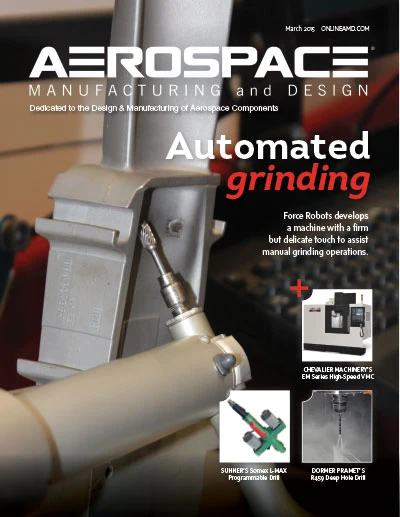 A robot named ISAAC – an acronym for Integrated Structural Assembly of Advanced Composites – features a spinning head and acrobatic arm, and it promises to give NASA’s Langley Research Center a leg up in the quest to develop lighter, stronger composite structures and materials for aerospace vehicles. Planes, rockets, and other vehicles can use less fuel and carry more if they are made of strong, lighter-weight materials.
A robot named ISAAC – an acronym for Integrated Structural Assembly of Advanced Composites – features a spinning head and acrobatic arm, and it promises to give NASA’s Langley Research Center a leg up in the quest to develop lighter, stronger composite structures and materials for aerospace vehicles. Planes, rockets, and other vehicles can use less fuel and carry more if they are made of strong, lighter-weight materials.
One of only three such robots in the world, the multi-million dollar system was commissioned in January 2015.
The machine weighs more than 7 tons and is two stories tall, fully extended. Built by Electroimpact Inc., ISAAC is an adaptation of a KUKA standard industrial robot.
One of its key features is a large, rotating, disc-like head. The head is typically loaded with as many as 16 spools of carbon-fiber ribbon, which the robot deposits in preprogrammed patterns onto complex molds up to 40ft long. These ribbons – made of carbon fibers smaller than human hairs combined with partially cured epoxy resins – can be fused together in sheets according to precise patterns, directions, or arrangements. Those sheets are layered, one on top of the other, and eventually fully cured into one solid, durable mass.
ISAAC gives researchers more flexibility in arranging the ribbons and the fibers they contain. Conventional composites used in existing vehicles consist of many layers of fibers oriented at 0°, 45°, and 90°. ISAAC can lay them down along a curving path, following a pattern designed to increase strength and performance.
The robot’s head isn’t a permanent fixture; it can be detached and replaced with identical ones loaded with different tools. As a result, transforming the system to work on a new job can be fast.
“It changes how we look at composites,” says Brian Stewart, integration manager for the project. “It shifts the game, shifts the paradigm.”
The robot’s first assignments will be working for the Aeronautics Research Mission Directorate’s Advanced Composites Project and the Space Technology Mission Directorate’s Composites for Exploration Upper Stage. The Advanced Composites Project is an aeronautics initiative to cut the amount of time it takes to get advanced composites from development and certification to market.
ISAAC also may be asked to build flight-quality hardware, scaled-down models of aircraft and spacecraft for research purposes, aero-elastically tailored structures for wind tunnel tests, and even wind tunnel fan blades and helicopter rotor blades. The team is also looking at how the robot could be used to build metal parts or structures.
NASA Langley Research Center
www.nasa.gov/larc

Explore the March 2015 Issue
Check out more from this issue and find your next story to read.
Latest from Aerospace Manufacturing and Design
- United Performance Metals acquires Fabrisonic
- OES’ 30mm vertical lift stage
- March Manufacturing Lunch + Learn with Quell Corp.
- March Manufacturing Lunch + Learn with SMW Autoblok
- SwRI addresses critical aging aircraft issue
- Walter adds tools to its PCD milling cutter range
- Archer Aviation, Palantir partner on next-gen aviation
- Fairlane Products’ TG GripSerts and accessories for low-profile clamping





